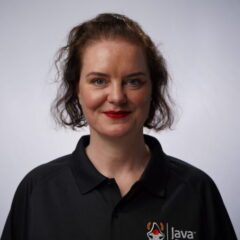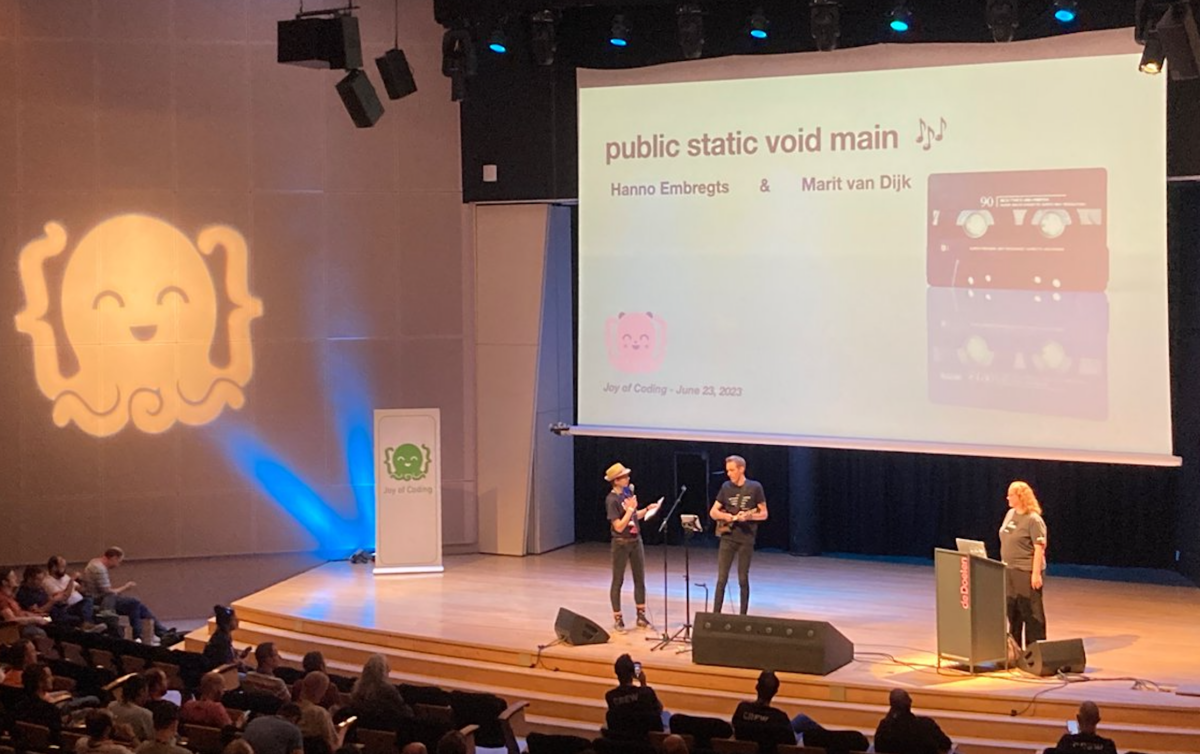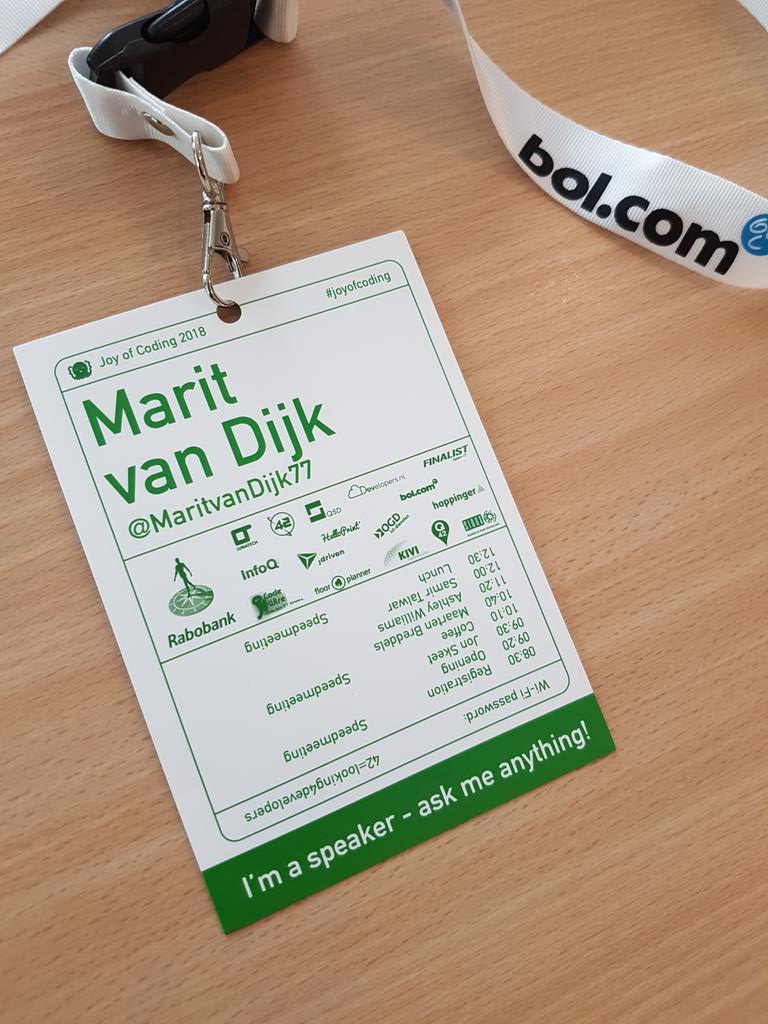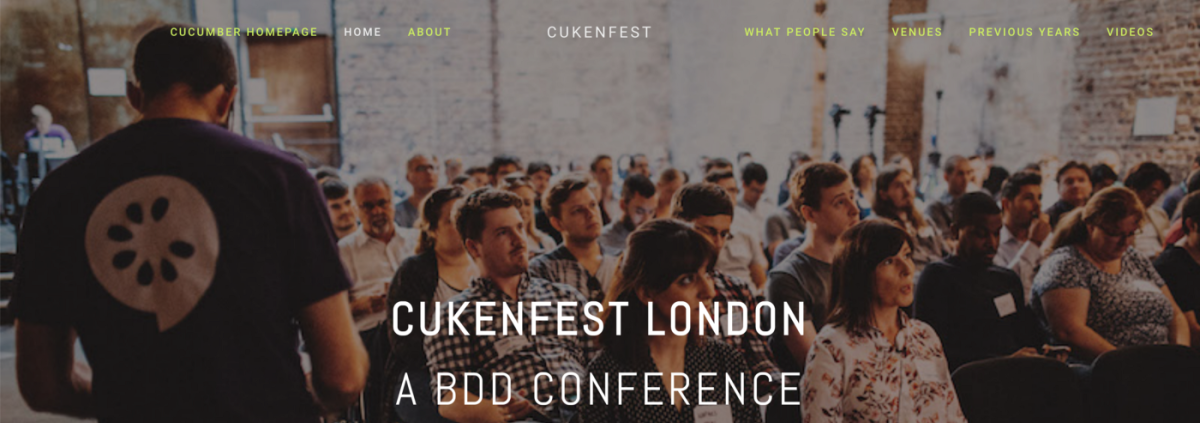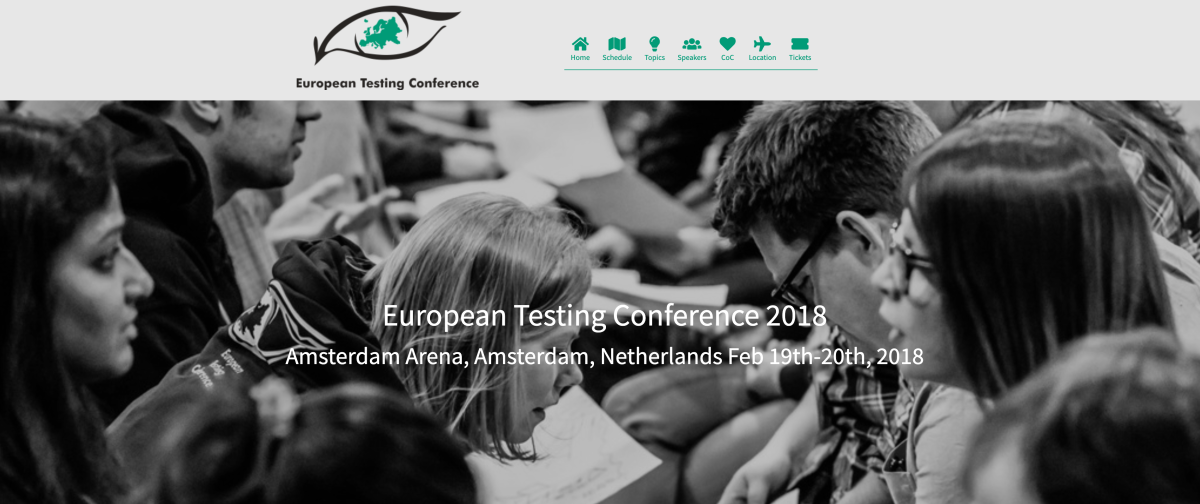On June 23, 2023 Hanno Embregts and I performed a lightning talk / pop music quiz called “public static void main 🎶 “.
Hanno and I met at Joy of Coding 2022, where he gave his talk “What “Stairway to Heaven” Can Teach Us About Software Development“. In this talk, he plays parts of the song on stage with his travel guitar, and then explains how the lyrics are about software development.
How it started
A few weeks later, I saw a tweet that said “I realized that you can sing “public static void main” like “Everybody dance now” and I can’t stop doing it”. (And, I’ve been doing just that ever since.) Someone responded to my retweet by pointing out that this also works for Vamos a la playa.
I love it when a plan comes together
So I pitched the idea to Hanno of doing a “pop music quiz” with different songs where we would replace the lyrics with “public static void main” and we could have the audience guess what the original song was. A few months later, Hanno contacted me to say he had found at least 15(!!) songs where this would work. Apparently, he had gone through the Top 2000 looking for songs he thought might work. So we got together to discuss this idea, write an abstract and figure out where to submit it too. We submitted to several conferences that offered lightning talks slots and … got accepted to Joy of Coding 2023! Coincidentally, this is also where I got started speaking, so I was very excited to return.
Time constraints
Unfortunately, we had to cut some songs due to the 5-minute limit, so we selected the 6 we thought would work best. We selected a quiz tool, created the questions, and some videos to go with them using IntelliJ IDEA‘s live templates.
The Joy of Coding organizers were extremely helpful in allowing us to take the last slot in the lightning talk line-up, letting us use our own laptop to run the quiz, and talking to the venue to get Hanno an audio monitor at the last minute.
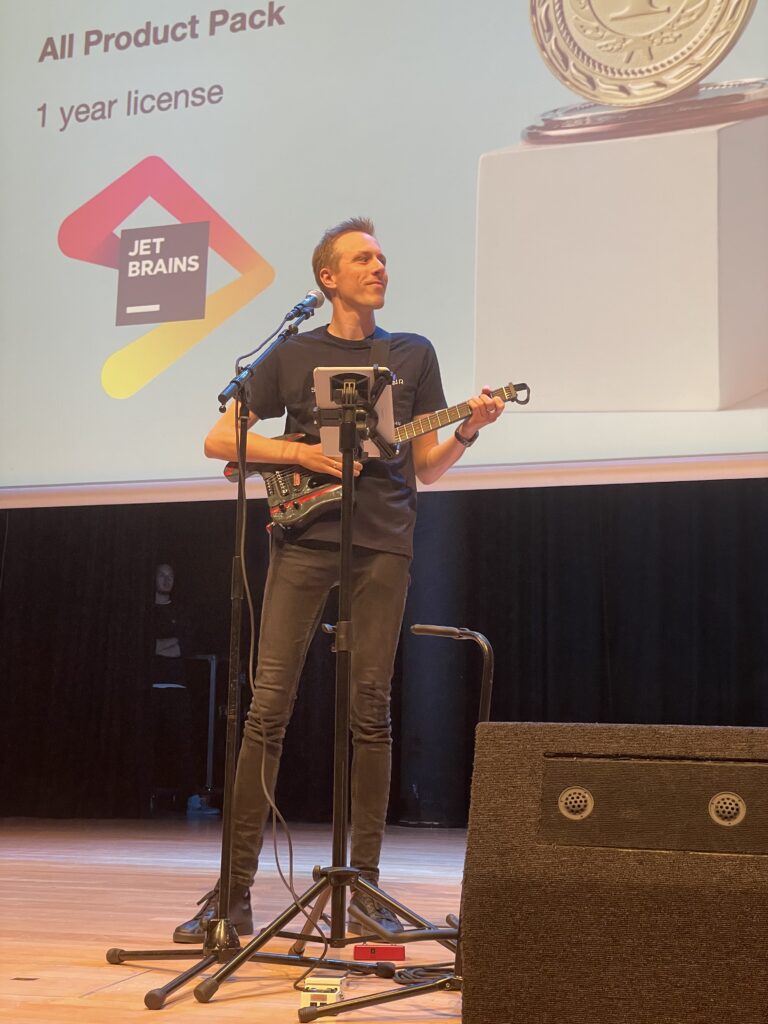

Joy of Coding 2023
On the day of the conference, we had a lot of fun playing and singing along.
And to our surprise, we ended up with a tie for first place! Fortunately, we had some back-up songs we could use to settle this tie in a kind of “sudden death” match between the two top contestants.
We also got some positive feedback from the crowd, as well as an invitation to perform again elsewhere.
Thanks
Many thanks to original tweeters for the idea (I’ll forgive you for also getting the song stuck in my head), Hanno Embregts for the awesome collaboration, Yosuf Haydary for pictures and videos of the event and Joy of Coding for having us!
